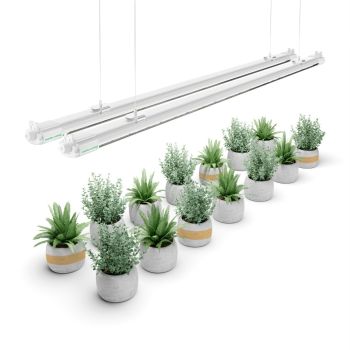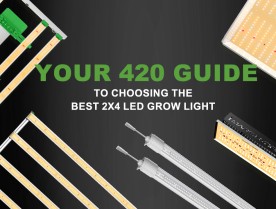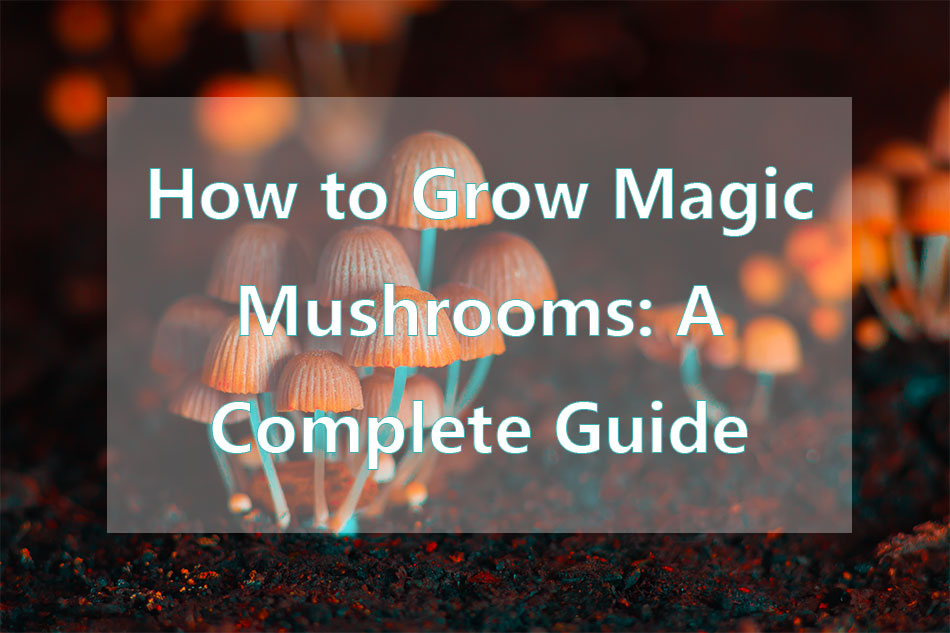
Mushroom cultivation is a fascinating and rewarding endeavor that allows you to produce your own edible fungi at home. Whether you're a seasoned gardener or a novice with a green thumb, growing magic mushroom is an accessible and enjoyable process. In this comprehensive guide, we'll walk you through the steps of cultivating mushrooms from start to finish, offering insights into the key aspects of the process.
Basics of Mushroom Cultivation
Before delving into the process of growing magic mushrooms, it's essential to understand the basics of mushroom cultivation to ensure a strong foundation.
Magic mushrooms thrive in specific conditions:
- Temperature: 75-80°F (24-27°C) during colonization; slightly cooler at fruiting.
- Humidity: 90-95% for most of the growth cycle.
- Light: Indirect sunlight or fluorescent lights for a few hours a day.
Mushrooms, including magic mushrooms (shrooms), are the fruiting bodies of a larger mycelium network that thrives under specific conditions. These conditions encompass the right nutrients, suitable temperatures, adequate humidity, and proper light conditions for growth. Cultivating mushrooms is a delicate process that demands meticulous attention to detail to prevent contamination.
With a grasp of the fundamental principles of mushroom cultivation, let's now delve into the specifics of how to grow magic mushrooms.
Preparing the Substrate and Tools for Cultivation
Mushroom cultivation begins with the careful preparation of substrates and the selection of appropriate tools. Substrates provide the essential nutrients and environment for mushroom growth, and the tools ensure the process is conducted in a sterile, controlled manner.
Selecting and Preparing Substrates
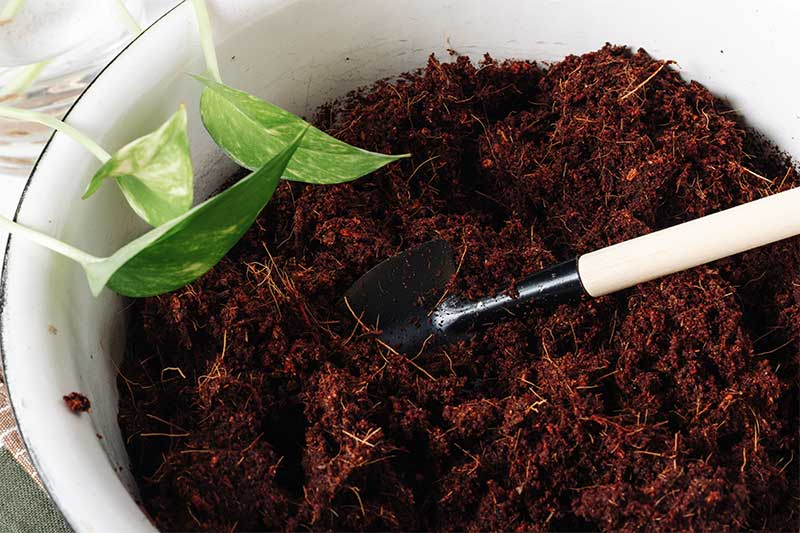
The choice of substrate is crucial as it forms the foundation for healthy mushroom growth. Common options include:
1. Rye Grain: Rich in nutrients, it's often the first choice for initial colonization.
2. Brown Rice Flour: Easy to use and readily available, making it ideal for beginners.
3. Vermiculite: Used for its excellent water retention abilities, it's often mixed with brown rice flour to create a balanced substrate.
4. Coco Coir: Preferred by more experienced cultivators, it's known for its moisture retention and resistance to contamination.
To prepare the substrate, mix the chosen materials in the correct proportions. Each substrate has its unique preparation method, ensuring the right balance of nutrients and moisture.
Sterilizing the Substrate
Sterilization is a key step in mushroom cultivation. It involves:
- Using a Pressure Cooker: The substrates are placed in a pressure cooker to sterilize them. This process kills any potential contaminants that could interfere with mushroom growth.
- Cooling Down: After sterilization, the substrate must be allowed to cool to room temperature before introducing the mushroom spores or spawn.
Essential Tools for the Process
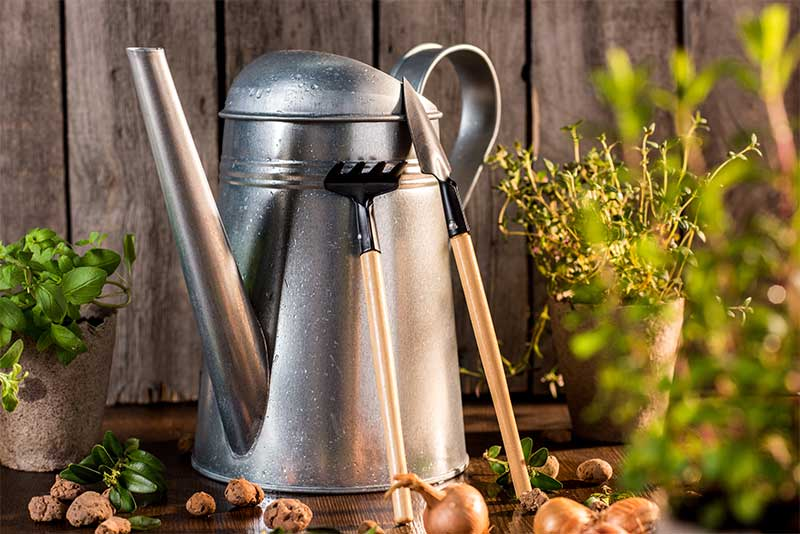
The right tools are essential for maintaining a sterile environment and ensuring the success of the cultivation:
- Sterile Syringes: Used for spore inoculation, ensuring a clean transfer of spores to the substrate.
- Protective Gear: Gloves and face masks are worn to maintain sterility and prevent contamination from the cultivator.
- Mason Jars or Grow Bags: Serve as containers for the substrate during the inoculation and colonization stages.
- Thermometer and Hygrometer: These instruments are crucial for monitoring the environmental conditions, specifically temperature and humidity, which are critical for mushroom growth.
- Spray Bottle: Used to maintain the necessary humidity levels during the fruiting stage.
- Grow Tent: Provides a controlled environment, essential for the fruiting stage, where specific conditions of light, temperature, and humidity need to be maintained.
With these substrates and tools prepared, you're well-equipped to begin the journey of mushroom cultivation, ensuring a controlled, sterile, and efficient process.
The Cultivation Process
Spore Inoculation
- Process: Spore inoculation is the first step in mushroom cultivation. Here, spores are introduced into the sterilized substrate. This is done using a syringe in a sterile environment to prevent contamination. A laminar flow hood provides a clean air space, but a still-air box can also be used as an economical alternative. The spore syringe is injected into the substrate, distributing spores evenly.
- Tools: Sterile syringes for spore distribution, sterilized mason jars or grow bags for holding the substrate. The jars or bags should have small holes or filters to allow for gas exchange while maintaining sterility.
Colonization
- Process: After inoculation, the substrate needs to be stored in a dark, stable environment for the mycelium to colonize it. This phase is critical as the mycelium forms the network that will eventually produce mushrooms. The ideal temperature range for colonization is 75-80°F (24-27°C). The process can take several weeks, during which the substrate should not be disturbed.
- Tools: Utilize a grow tent for housing the inoculated substrate, creating an optimal environment for mushroom development. Equipping the tent with a thermometer and hygrometer is crucial to continuously monitor and regulate the temperature and humidity levels, ensuring they remain within the ideal range for mushroom growth.
Fruiting
- Process: Once colonization is complete, the substrate is ready for the fruiting phase. This requires introducing environmental changes like lower temperatures (around 70°F or 21°C), higher levels of oxygen, and indirect light. These conditions signal the mycelium to start producing mushrooms. The humidity should be kept high (around 90-95%), and fresh air exchange is important to stimulate growth.
- Tools: A fruiting chamber, such as a shotgun fruiting chamber, made from a large, clear storage box with holes drilled in it for ventilation. Additionally, you'll need tools like a hygrometer to monitor humidity, a thermometer for temperature control, and a light source. However, consider that a grow tent can serve as a superior alternative to an SGFC, offering several benefits. It allows for precise regulation of temperature, humidity, and light, all of which are crucial for optimal mushroom growth. Grow tents provide more space and ensure a stable and efficient growing environment, leading to improved yields. They come equipped with built-in ventilation systems, enhancing air exchange and reducing the risk of contamination. Furthermore, grow tents are versatile and adaptable to different mushroom varieties and cultivation scales. For growers aiming to achieve greater control and higher yields, opting for a grow tent is a wise decision.
Harvesting
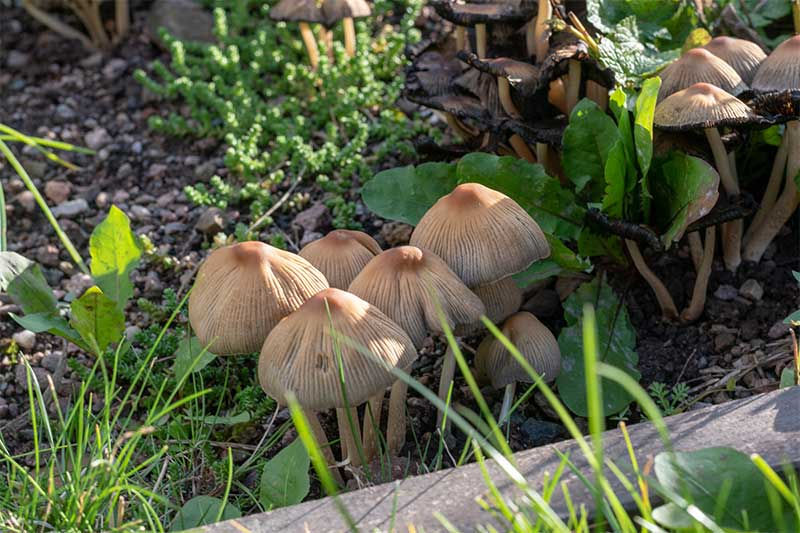
- Process: The mushrooms are ready to harvest when the caps fully open and just before the veil underneath the cap breaks. Harvesting at the right time is crucial for maximizing the potency and yield. The mushrooms should be twisted and pulled gently from the substrate to avoid damaging the underlying mycelium, which can produce further flushes of mushrooms.
- Tools: Clean hands or sterile gloves are important to prevent contamination. A pair of sterilized scissors or a sharp knife may be used to cut the mushrooms at the base if they cannot be twisted off easily.
Each step in the cultivation process of magic mushrooms is crucial and requires careful attention to detail and sterility. From spore inoculation to harvesting, the right conditions and tools are essential for a successful cultivation.
Post-Harvest Processing and Storage
After harvesting magic mushrooms, the next crucial steps are proper drying and storage. These processes are key to maintaining the mushrooms' potency, preventing degradation of the psychoactive compounds, and avoiding the growth of mold and bacteria.
Drying Magic Mushrooms
1. Initial Drying (Pre-Dehydration):
- Process: Lay the fresh mushrooms out on a clean, absorbent paper in a well-ventilated area. Avoid direct sunlight. A fan can be used to gently circulate air around the mushrooms. This step reduces the initial moisture content.
- Duration: This process typically lasts 24-48 hours, depending on the ambient humidity and size of the mushrooms.
2. Dehydration:
- Process: Use a food dehydrator set between 95-105°F (35-40°C). The low temperature ensures that the psychoactive compounds are not degraded while effectively removing moisture.
- Alternative: If a dehydrator is not available, you can use an oven on the lowest setting with the door slightly open. However, this requires careful monitoring as the heat can be uneven and too high.
- Duration: Dehydration can take anywhere from 6 to 12 hours, depending on the mushroom size and dehydrator efficiency.
Testing for Dryness
- Criteria: Mushrooms are adequately dried when they snap or crack rather than bending. This level of dryness ensures long-term storage without risk of mold.
Storage of Dried Mushrooms
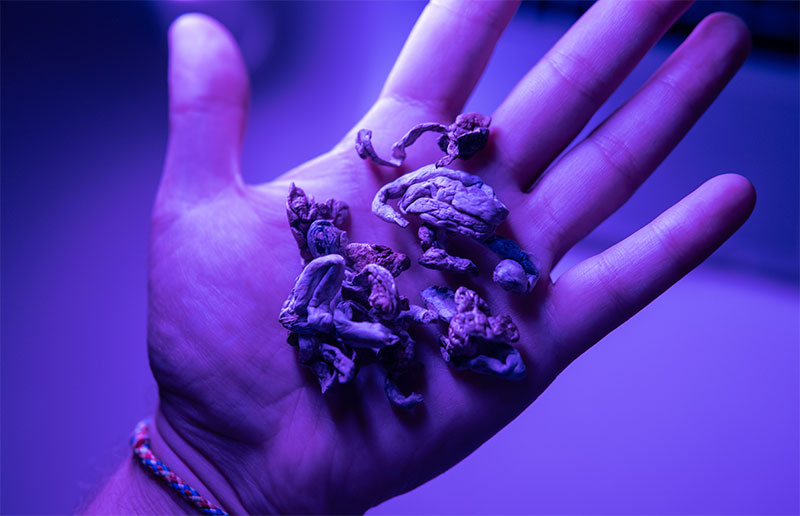
1. Container Selection:
- Use airtight containers like glass jars or vacuum-sealed bags to prevent reabsorption of moisture.
- Dark-colored or opaque containers help protect against light degradation.
2. Environment for Storage:
- Temperature: Store in a cool place. A temperature around 68°F (20°C) or lower is ideal.
- Humidity: Ensure the storage area is dry. Using desiccant packets in the storage containers can help absorb any residual moisture.
- Light: Keep the containers in a dark place, as light can degrade the psychoactive compounds over time.
3. Long-Term Storage:
- For extended storage, consider using a vacuum sealer and placing the containers in the refrigerator or freezer. This can significantly extend the shelf life of the dried mushrooms.
The post-harvest processing and storage of magic mushrooms are critical to preserving their quality, potency, and safety. Proper drying removes moisture that could lead to spoilage, while careful storage in appropriate conditions protects the psychoactive properties.
Tips for Success: Magic Mushroom Grow Kits
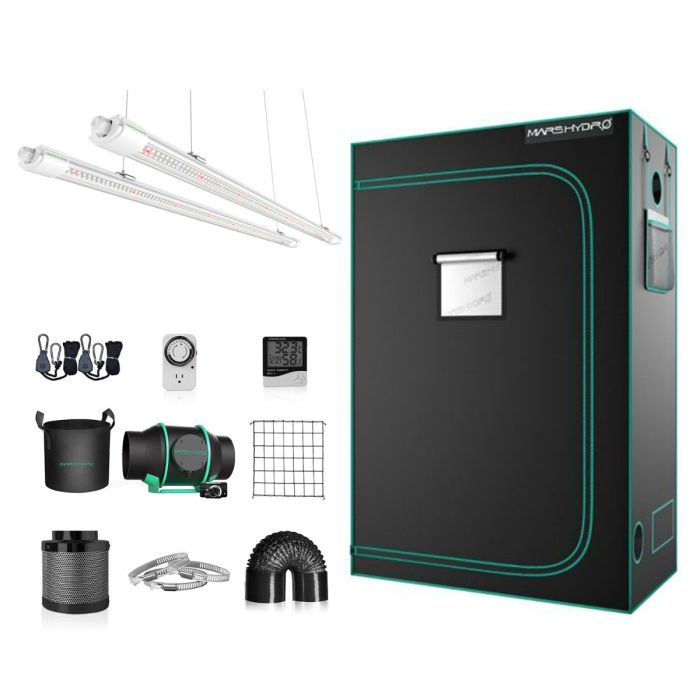
The Mars Hydro VG80 2x4 Indoor Grow Tent Kit is well-suited for mushroom cultivation due to several key features that align with the specific requirements of growing mushrooms.
1. Controlled Environment: Mushrooms thrive in specific environmental conditions. The VG80's enclosed grow tent allows for precise control over factors such as temperature, humidity, and light, which are crucial for successful mushroom growth.
2. Proper Ventilation: The kit includes a 4-inch inline fan and carbon filter. This ventilation system is essential for maintaining fresh air circulation and proper carbon dioxide levels, both of which are vital during the fruiting stage of mushroom cultivation.
3. Lighting Control and Durability in Moist Environments: While mushrooms have minimal light requirements compared to other plants, the low-intensity LED lighting of the VG80 LED grow light is advantageous during critical growth phases, such as the mycelium colonization stage. Additionally, the light is IP65 waterproof, making them highly suitable for the moisture-rich environments typical in mushroom cultivation. This feature ensures that the VG80 can operate effectively and safely in the humid conditions necessary for mushroom growth.
4. Space Efficiency: The compact size of the VG80 (4ft x 2ft) makes it suitable for indoor use where space might be limited. This is especially advantageous for home growers or hobbyists who don't have large areas for cultivation.
5. Durable and Sterile Environment: The grow tent is made from tear-proof 1680D canvas with heavy-duty zippers, creating a durable and sterile environment. This is essential in mushroom cultivation to prevent contamination and ensure the health of the mushrooms.
6. Humidity and Temperature Monitoring: With additional equipment like a hygrometer, growers can constantly monitor and adjust the humidity and temperature inside the tent, which are critical parameters for mushroom growth.
Mars Hydro VG80 grow tent kit provides an ideal, controlled environment that can be finely tuned to meet the specific needs of mushroom cultivation, making it a perfect choice for both novice and experienced growers.
Conclusion
It's essential to underscore that magic mushroom cultivation should always be approached with a strong commitment to legality and safety. Compliance with local laws and regulations regarding the cultivation and use of these mushrooms is paramount.
As you commence your voyage into the realm of mushroom cultivation, keep in mind that success hinges on patience, meticulous attention to detail, and the maintenance of a sterile environment. Mars Hydro wishes you a fulfilling and prosperous growing experience!


